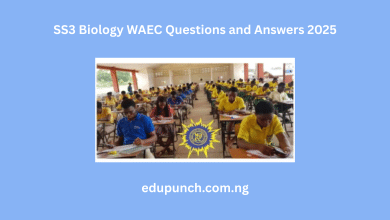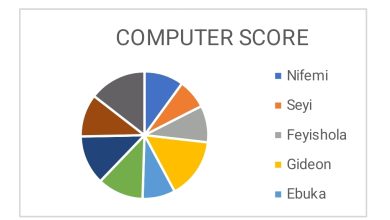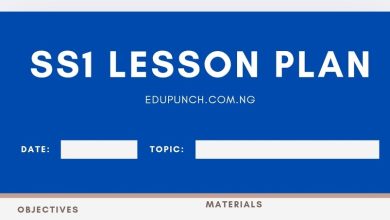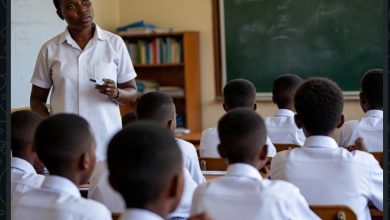SS1 Literature Exam Questions- First Term
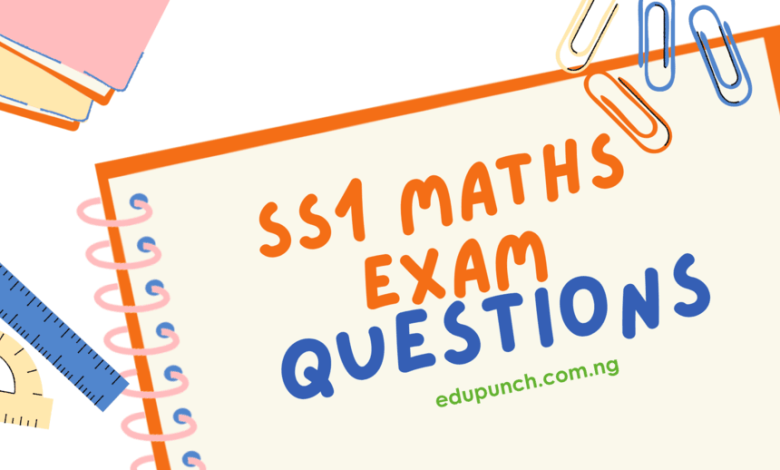
Prepare for SS1 Literature examination with our comprehensive first-term questions and answers. Boost your grades with our expertly curated study materials and past questions.
SS1 Literature Examination Past Questions
FIRST TERMINAL EXAMINATION FOR ACADEMIC SESSION
LITERATURE-IN-ENGLISH
GRADE 10
SECTION A
- Which of the following is common to all forms of literature? A. language B. chorus C. action D. narrator
- The three major forms of literature are A. tragedy, comedy, tragi-comedy B. poetry, drama, folktales C. drama, lyric, prose fiction D. poetry, drama, prose
- Beauty in poetry depends mainly on A. expression and rhythm B. length and theme C. vowels and consonants D. mood and verse form
- Read the extract below and answer this question.
Read Also: SS1 English Exam Questions & First Term
But the towering earth was tired of sitting in one position. She moved, suddenly, and the houses crumbled, the mountains heaved horribly, and the work of a million years was lost.
- The predominant figure of speech in the above extracts is A. Oxymoron B. Metaphor C. Simile D. Personification
- The subject matter of the above extract is A. earthquake B. house movement C. Sea waves D. storm
- The image depicted in the extract is one of A. destruction B. merriment C. happiness D. admiration
- ‘The birds fly high over the hills beyond the corn fields.’ The poetic device used in the above extract is A. assonance B. alliteration C. metaphor D. metonymy
- A poem written or rendered in praise of a person or thing is called A. a lyric B. an ode C. an elegy D. a panegyric
- The choice of appropriate words to convey the thoughts of an author is called A. idiomatic language B. setting C. figure of speech D. diction
- The state of mind of a poet can be described as A. style B. mood C. setting D. theme
- Which of the following is a likely source of traditional oral poetry? A. Theatre B. fiction C. books D. songs
- In a novel, the antagonist is A. a fully developed character B. a flat character C. the main female character D. the archrival of the hero
Read the extract below and answer this question.
The pattering rain was kicking up little
explosions of dust in the glade. He heard the
faint whisper of the stream as it stole across
the land and disappeared into the bush.
- The figure of speech underlined in line 3 is A. assonance B. consonance C. onomatopoeia D. alliteration
- Which of the following is an African poet? A. Dennis Brutus B. William Wordsworth C. Rober Frost D. W.B.Yeats
- In a play, a long speech by a single character in the presence of other characters is called A. soliloguy B. monologue C. aside D. prologue
- A play that is full of exaggerated ridicule and laughter is called A. farce B. comedy C. tragi-comedy D. masque
- Pick the odd item from the list below A. tragedy B. comedy C. epilogue D. tragi-comedy
- A group of actors in a play is called A. characters B. cast C. chorus D. prompters
- A novel is usually written in A. prose B. verse C. scenes D. stanzas
- What distinguishes a novel from a play is A. characters B. setting C. narration D. theme
- Which of the following best describes Literature? It A. tells the story of great men and women B. is a reflection of man’s life in society C. is a record of past events D. describes what never happened and cannot happen
- The literary device in the statement – ‘Students are to come to class with their Shakespeare’ is called A. metonymy B. litotes C. synecdoche D. personification
- The first-person narrator is usually A. the protagonist B. a villain in the novel C. the antagonist D. a character in the novel
- Which of the following is closest to the novel? A. the short story B. fable C. tale D. epic
- “The people’s voices rutted like pigs in the mud” is an example of A. simile B. metaphor C. personification D. metonymy
Read the extract below and answer the question.
That age is best which is the first
When youth and blood are warmer
But being spent, the worse, and worst
Times still succeed the former.
- The rhyme scheme is known as A. abba B. abab C. aabb D. bbaa
Read the extract below and answer the question.
That age is best which is the first
When youth and blood are warmer
But being spent, the worse, and worst
Times still succeed the former.
- This kind of rhyme scheme is known as A. alternate B. irregular C. free verse D. couplet
- A poem of 14 lines is known as a A. quatrain B. octave C. sestet D. sonnet
- A play on words is A. innuendo B. humour C. pun D. jest
SECTION B
Fill in the gaps with the most appropriate answers.
- “The opportunity knocked at his door” is an example of ___________
- _________ is the opposite of hyperbole.
- ________indicates two opposing words utilized inside a single sentence to create levity.
- ‘Everyone thinks my runny nose is funny, but it’s snot’ is an example of _________
- __________ addresses a subject that is not present in the work.
- The statement ‘Your hands are as clean as mud’ illustrates _________
- ________ is the usage of a mild word in substitution of something that is more explicit or harsh when referring to something unfavourable or unpleasant.
- ‘She’s as old as the hills’ is an example of __________ figure of speech.
- __________ approves and interprets the play script. He is the head of the creative team.
- ________ provides clothing for the overall appearance of a character or performer.
SECTION C: THEORY
Instruction: answer any five questions from this section
- Write short notes on the following theatre personnel
- Playwright
- Director
- Stage manager
- Property manager
- Make-up designer
- Read the poem below and analyse the elements of poetry (title, imagery, theme, rhyme scheme) from the text.
“Fire and Ice” by Robert Frost
Some say the world will end in fire,
Some say in ice.
From what I’ve tasted of desire
I hold with those who favor fire.
But if it had to perish twice,
I think I know enough of hate
To say that for destruction ice
Is also great
And would suffice.
- In your own words, explain the following words;
- Suspense
- Antagonist
- Protagonist
- Soliloquy
- Flashback
- Discuss in detail, the forms of drama.
- Explain any five elements of prose.
- Differentiate between fiction and non-fiction with copious examples
- Explain some characteristics of Romantic, metaphysical and modern poems

